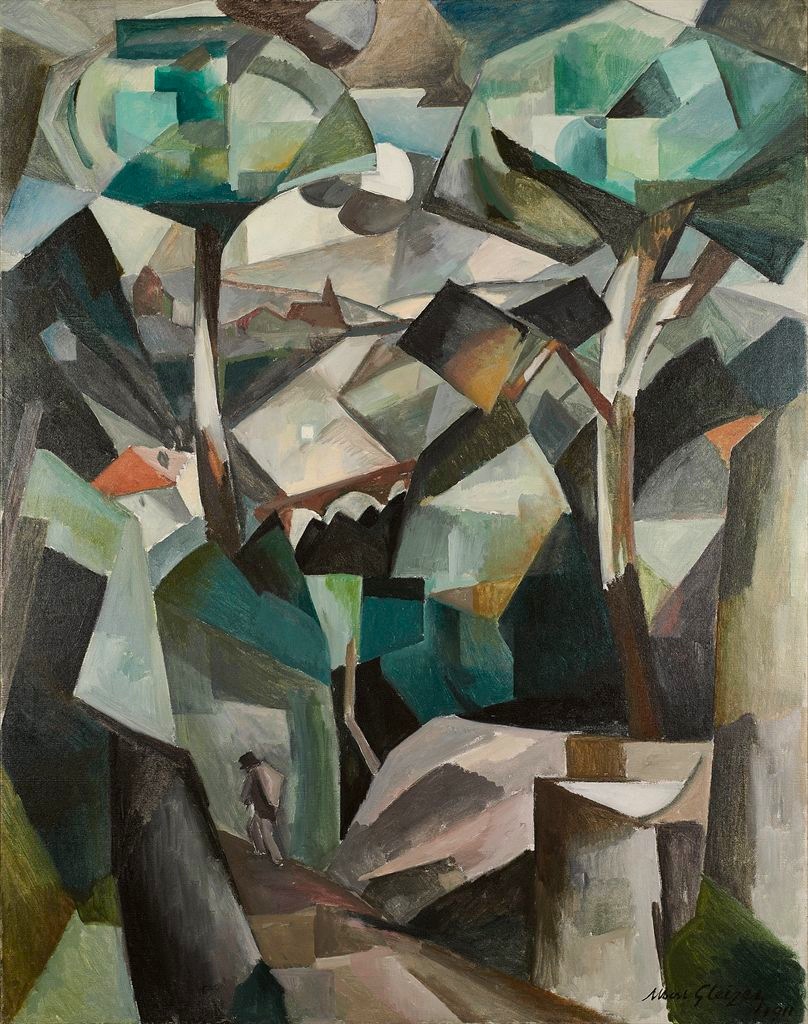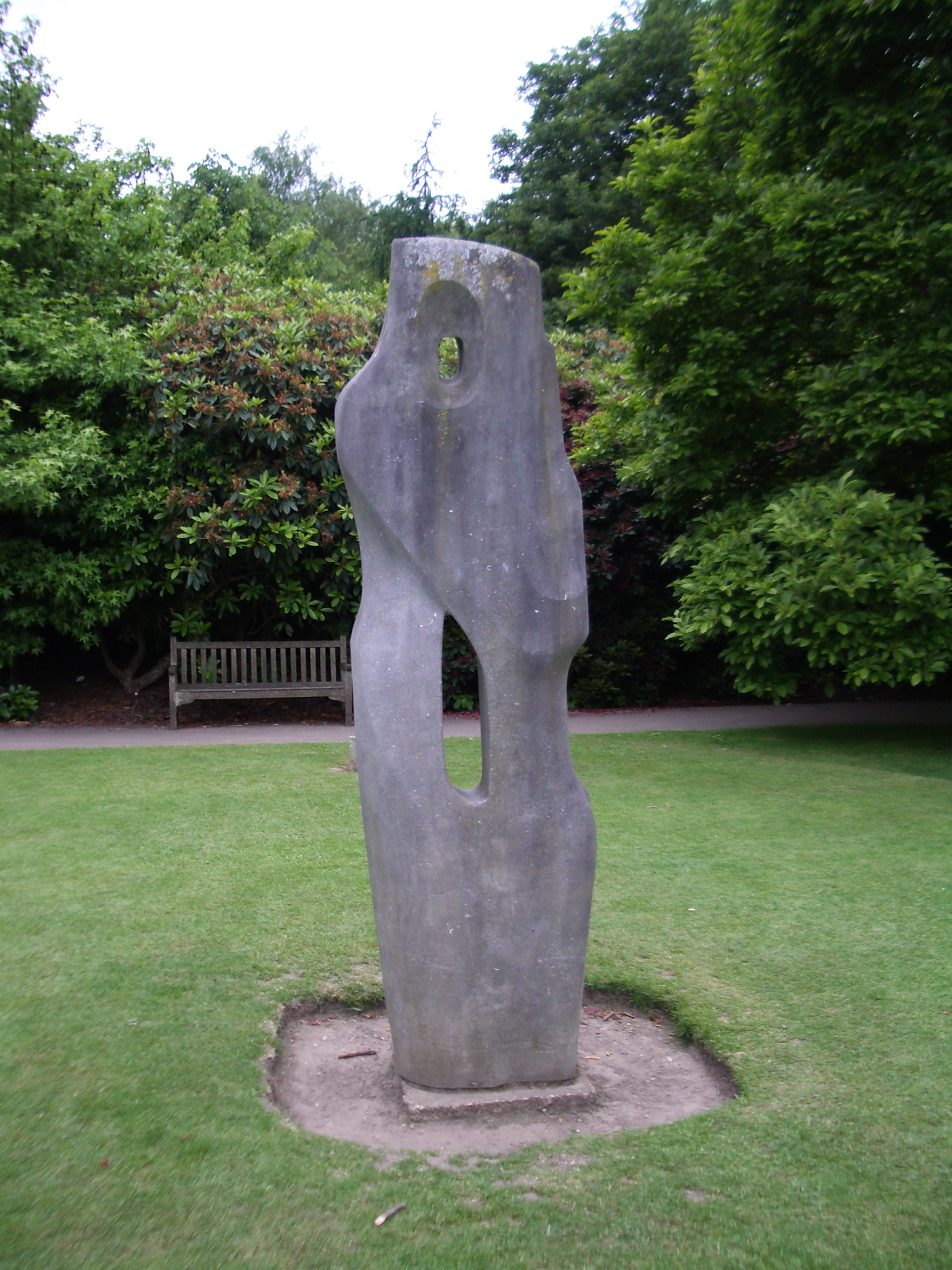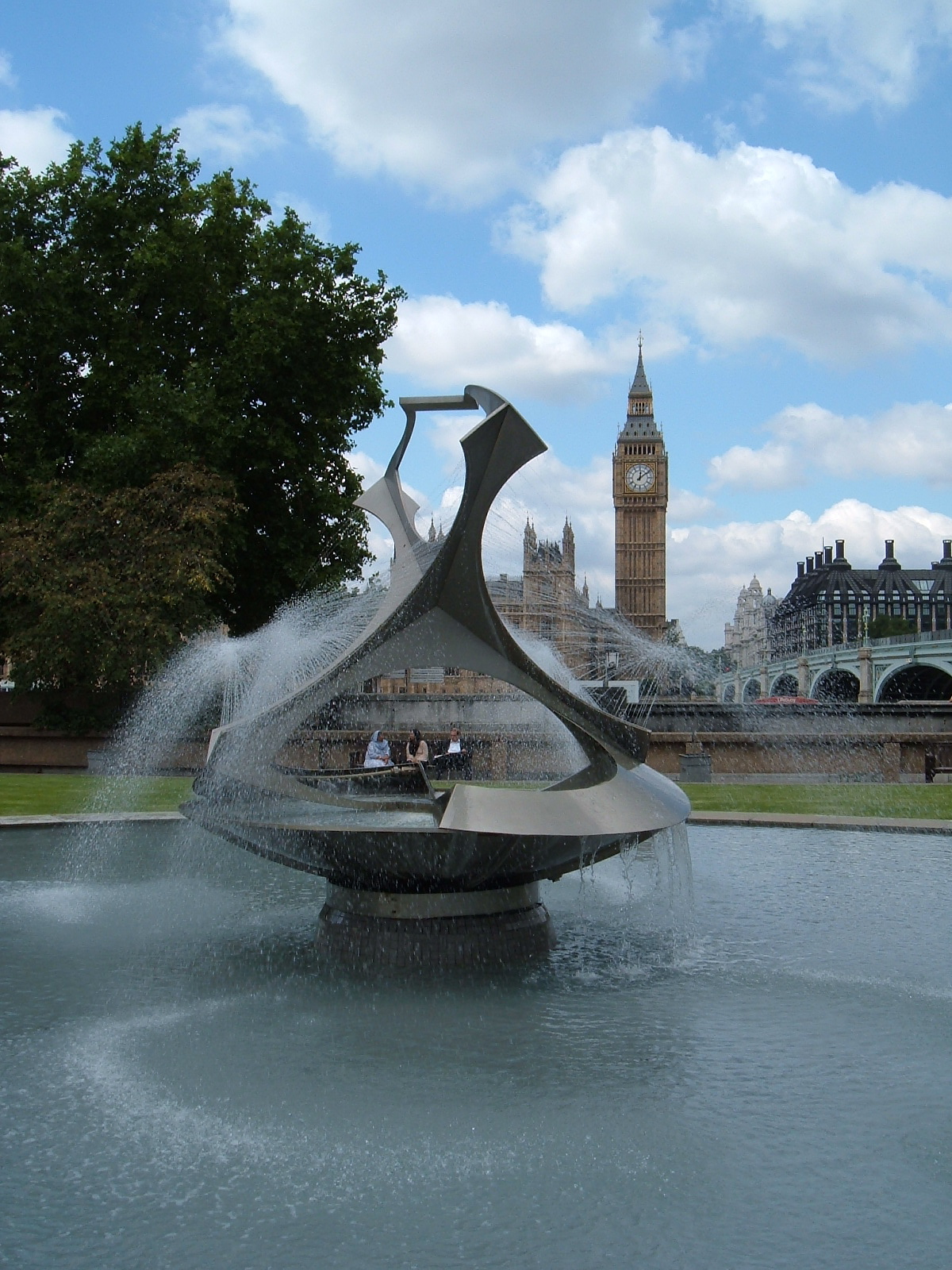|
Abstraction-Création
Abstraction-Création was a loose association of artists formed in Paris in 1931 to counteract the influence of the Surrealist group led by André Breton. Founders Theo van Doesburg, Auguste Herbin, Jean Hélion and Georges Vantongerloo started the group to foster abstract art after the trend turned to representation in the 1920s. A non-prescriptive group of artists were involved, whose ideals and practices varied widely: Albert Gleizes, František Kupka, Piet Mondrian, Jean Arp, Marlow Moss, Naum Gabo, Alberto Magnelli, Barbara Hepworth, Ben Nicholson, Kurt Schwitters, Wassily Kandinsky, Wolfgang Paalen, Théo Kerg, Taro Okamoto, Paule Vézelay, Hans Erni, Bart van der Leck Bart van der Leck (26 November 1876, Utrecht (city), Utrecht – 13 November 1958, Blaricum) was a Dutch painter, designer, and ceramicist. With Theo van Doesburg and Piet Mondrian he founded the De Stijl art movement. Son of a house painter, h ..., Katarzyna Kobro, Leon Tutundjian and John Wardell Power ... [...More Info...] [...Related Items...] OR: [Wikipedia] [Google] [Baidu] |
Albert Gleizes
Albert Gleizes (; 8 December 1881 – 23 June 1953) was a French artist, theoretician, philosopher, a self-proclaimed founder of Cubism and an influence on the School of Paris. Albert Gleizes and Jean Metzinger wrote the first major treatise on Cubism, ''Du "Cubisme"'', 1912. Gleizes was a founding member of the Section d'Or group of artists. He was also a member of ''Der Sturm'', and his many theoretical writings were originally most appreciated in Germany, where especially at the Bauhaus his ideas were given thoughtful consideration. Gleizes spent four crucial years in New York, and played an important role in making America aware of modern art. He was a member of the Society of Independent Artists, founder of the Ernest-Renan Association, and both a founder and participant in the Abbaye de Créteil. Gleizes exhibited regularly at Léonce Rosenberg's ''Galerie de l’Effort Moderne'' in Paris; he was also a founder, organizer and director of Abstraction-Création. From the mid-1 ... [...More Info...] [...Related Items...] OR: [Wikipedia] [Google] [Baidu] |
Auguste Herbin
Auguste Herbin (29 April 1882 – 31 January 1960) was a French Painting, painter of modern art. He is best known for his Cubism, Cubist and abstract art, abstract paintings consisting of colorful Geometry, geometric figures. He co-founded the groups Abstraction-Création and Salon des Réalités Nouvelles which promoted non-figurative abstract art. Early life Herbin was born in Quiévy, Nord (département), Nord. His father was a Craftsman (tools), craftsman. Herbin studied drawing at the École des Beaux-Arts de Lille, from 1899 to 1901, when he settled in Paris. Career The initial influence of Impressionism and Post-Impressionism visible in paintings that he sent to the Société des Artistes Indépendants, Salon des Indépendants in 1906 gradually gave way to an involvement with Fauvism, and he exhibited at the Salon d'Automne in 1907. He started to experiment with Cubism after his move in 1909 to the Le Bateau-Lavoir, Bateau-Lavoir studios, where he met Pablo Picasso, George ... [...More Info...] [...Related Items...] OR: [Wikipedia] [Google] [Baidu] |
Jean Arp
Hans Peter Wilhelm Arp (16 September 1886 – 7 June 1966), better known as Jean Arp in English, was a German-French sculptor, painter, and poet. He was known as a Dadaist and an abstract artist. Early life Arp was born in Straßburg (now Strasbourg), the son of a French mother and a German father, during the period following the Franco-Prussian War when the area was known as Alsace-Lorraine (''Elsass-Lothringen'' in German) after France had ceded it to Germany in 1871. Following the return of Alsace to France at the end of World War I, French law determined that his name become "Jean". Arp would continue referring to himself as "Hans" when he spoke German. Career Dada In 1904, after leaving the École des Arts et Métiers in Straßburg, he went to Paris where he published his poetry for the first time. From 1905 to 1907, he studied at Kunstschule in Weimar, Germany, and in 1908 went back to Paris, where he attended the Académie Julian. Arp was a founder-member of the fir ... [...More Info...] [...Related Items...] OR: [Wikipedia] [Google] [Baidu] |
Tarō Okamoto
was a Japanese artist, art theorist, and writer. He is particularly well known for his avant-garde paintings and public sculptures and murals, and for his theorization of traditional Japanese culture and avant-garde artistic practices. Biography Early life (1911–1929) Taro Okamoto was the son of cartoonist Okamoto Ippei and writer Okamoto Kanoko. He was born in Takatsu, in Kawasaki, Kanagawa Prefecture. In 1927, at the age of sixteen, Okamoto began to take lessons in oil painting from the artist Wada Eisaku. In 1929, Okamoto entered the Tokyo School of Fine Arts (today Tokyo University of the Arts) in the oil painting department. Time in Europe (1929–1940) In 1929, Okamoto and his family accompanied his father on a trip to Europe to cover the London Naval Treaty of 1930. While in Europe, Okamoto spent time in the Netherlands, Belgium, and Paris, where he rented a studio in Montparnasse and enrolled in a lycée in Choisy-le-Roi. After his parents returned to Japan i ... [...More Info...] [...Related Items...] OR: [Wikipedia] [Google] [Baidu] |
Theo Van Doesburg
Theo van Doesburg (, 30 August 1883 – 7 March 1931) was a Dutch artist, who practiced painting, writing, poetry and architecture. He is best known as the founder and leader of De Stijl. He was married to artist, pianist and choreographer Nelly van Doesburg. Early life Theo van Doesburg was born Christian Emil Marie Küpper on 30 August 1883, in Utrecht, Netherlands, as the son of the photographer and Henrietta Catherina Margadant. After a short period of training in acting and singing, he decided to become a storekeeper. He always regarded his stepfather, Theodorus Doesburg, to be his natural father, so that his first works are signed with Theo Doesburg, to which he later added "van". Career His first exhibition was in 1908. From 1912 onwards, he supported his works by writing for magazines. He considered himself to be a modern painter, at that time, although his early work is in line with the Amsterdam Impressionists and is influenced by Vincent van Gogh, both in style ... [...More Info...] [...Related Items...] OR: [Wikipedia] [Google] [Baidu] |
Wolfgang Paalen
Wolfgang Robert Paalen (July 22, 1905 in Vienna, Austria – September 24, 1959 in Taxco, Mexico) was an Austrian-Mexican painter, sculptor, and art philosopher. A member of the Abstraction-Création group from 1934 to 1935, he joined the influential Surrealist movement in 1935 and was one of its prominent exponents until 1942. Whilst in exile in Mexico, he founded his own counter-surrealist art-magazine '' DYN'', in which he summarized his critical attitude towards radical subjectivism and Freudo-Marxism in Surrealism with his philosophy of contingency. He rejoined the group between 1951 and 1954, during his sojourn in Paris. Family and childhood Wolfgang Paalen was born in one of the famous ''Wienzeilenhäuser'' designed by Otto Wagner in Vienna (Köstlergasse 1 / Linke Wienzeile No. 40), Austria. He was the first of four sons of the Austrian-Jewish merchant and inventor , and his German wife, the actress Clothilde Emilie Gunkel. Gustav Robert, who had Polish-Ashkenazi an ... [...More Info...] [...Related Items...] OR: [Wikipedia] [Google] [Baidu] |
Barbara Hepworth
Dame Jocelyn Barbara Hepworth (10 January 1903 – 20 May 1975) was an English artist and sculptor. Her work exemplifies Modernism and in particular modern sculpture. Along with artists such as Ben Nicholson and Naum Gabo, Hepworth was a leading figure in the colony of artists who resided in St Ives during the Second World War. Born in Wakefield, Yorkshire, Hepworth studied at Leeds School of Art and the Royal College of Art in the 1920s. She married the sculptor John Skeaping in 1925. In 1931 she fell in love with the painter Ben Nicholson, and in 1933 divorced Skeaping. At this time she was part of a circle of modern artists centred on Hampstead, London, and was one of the founders of the art movement Unit One. At the beginning of the Second World War, Hepworth and Nicholson moved to St. Ives, Cornwall, where she would remain for the rest of her life. Best known as a sculptor, Hepworth also produced drawings – including a series of sketches of operating rooms foll ... [...More Info...] [...Related Items...] OR: [Wikipedia] [Google] [Baidu] |
Abstract Art
Abstract art uses visual language of shape, form, color and line to create a composition which may exist with a degree of independence from visual references in the world. Western art had been, from the Renaissance up to the middle of the 19th century, underpinned by the logic of perspective and an attempt to reproduce an illusion of visible reality. By the end of the 19th century many artists felt a need to create a new kind of art which would encompass the fundamental changes taking place in technology, science and philosophy. The sources from which individual artists drew their theoretical arguments were diverse, and reflected the social and intellectual preoccupations in all areas of Western culture at that time. Abstract art, non-figurative art, non-objective art, and non-representational art are all closely related terms. They have similar, but perhaps not identical, meanings. Abstraction indicates a departure from reality in depiction of imagery in art. This departure ... [...More Info...] [...Related Items...] OR: [Wikipedia] [Google] [Baidu] |
Katarzyna Kobro
Katarzyna Kobro (26 January 1898 – 21 February 1951) was a Polish avant-garde sculptor and a prominent representative of the Constructivist movement in Poland. A pioneer of innovative multi-dimensional abstract sculpture, she rejected Aestheticism and advocated for the integration of spatial rhythm and scientific advances into visual art. Born in Moscow to a family of mixed German and Russian heritage, Kobro immigrated to Poland in the 1920s where she produced most of her work. Together with her husband, Władysław Strzemiński, she worked on the concept of Spatiality by incorporating spatial composition as well as prefabricated elements and industrial or man-made products into sculpture. Early life Katarzyna Kobro was born on 26 January, 1898 in Moscow, in what was then the Russian Empire, to a multicultural family. Her father, Nikolai Alexander Michael von Kobro, came from a family of Baltic Germans from present-day Latvia, and her mother, Evgenia Rozanov, was Russ ... [...More Info...] [...Related Items...] OR: [Wikipedia] [Google] [Baidu] |
Paule Vézelay
Paule Vézelay (1892–1984) was a British painter. Biography Vézelay was born Marjorie Watson-Williams in Bristol, a daughter of the pioneering ENT surgeon, Patrick Watson-Williams (1863-1938). Before the First World War she trained for a short period at the Slade School of Fine Art and then at the London School of Art. She first gained recognition as a figurative painter, had her first London show in 1921 and was invited to join the London Group in 1922. She moved to France in 1926 and changed her name to Paule Vézelay possibly to identify herself with the School of Paris. In 1928 she abandoned figurative painting and made her first abstract work (which is now lost) and from then on worked exclusively in an abstract mode. In 1929 she met André Masson whom she fell in love and lived with for four years. Working side by side, they both painted dreamlike surrealist works. Vezelay became well respected in modernist Parisian art circles and was elected in the 1930s to membership ... [...More Info...] [...Related Items...] OR: [Wikipedia] [Google] [Baidu] |
Naum Gabo
Naum Gabo, born Naum Neemia Pevsner (23 August 1977) (Hebrew: נחום נחמיה פבזנר), was an influential sculptor, theorist, and key figure in Russia's post-Revolution avant-garde and the subsequent development of twentieth-century sculpture.Tate GalleryNaum Gabo biography. Retrieved March 23, 2018./ref> His work combined geometric abstraction with a dynamic organization of form in small reliefs and constructions, monumental public sculpture and pioneering kinetic works that assimilated new materials such as nylon, wire, lucite and semi-transparent materials, glass and metal. Responding to the scientific and political revolutions of his age, Gabo led an eventful and peripatetic life, moving to Berlin, Paris, Oslo, Moscow, London, and finally the United States, and within the circles of the major avant-garde movements of the day, including Cubism, Futurism, Constructivism, the Bauhaus, de Stijl and the Abstraction-Création group.Hammer, Martin and Naum Gabo, Christina Lo ... [...More Info...] [...Related Items...] OR: [Wikipedia] [Google] [Baidu] |
Alberto Magnelli
Alberto Magnelli (1 July 1888 – 20 April 1971) was an Italian modern painter who was a significant figure in the post war Concrete art movement. Biography Magnelli was born in Florence on July 1, 1888. In 1907 he started painting and, despite lacking formal art education, by 1909 he was established enough to be included in the Venice Biennale.Marlborough: Alberto Magnelli Biography His initial works were in a style.Palazzo Magnani: Alberto Magnelli /ref> ... [...More Info...] [...Related Items...] OR: [Wikipedia] [Google] [Baidu] |




.jpg)




